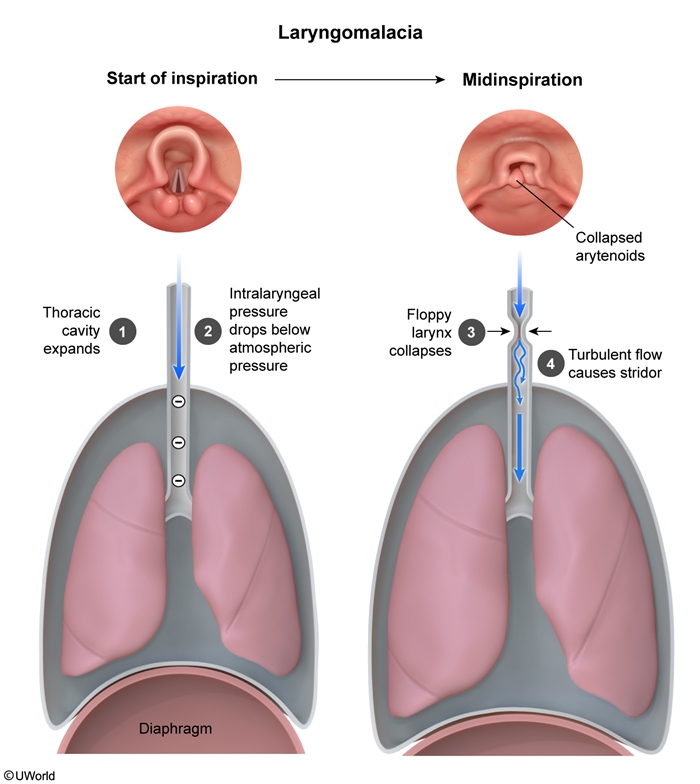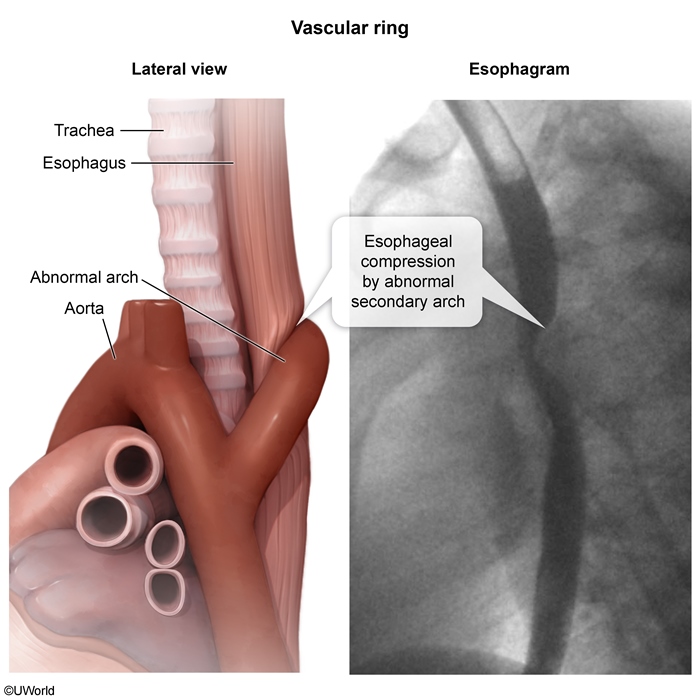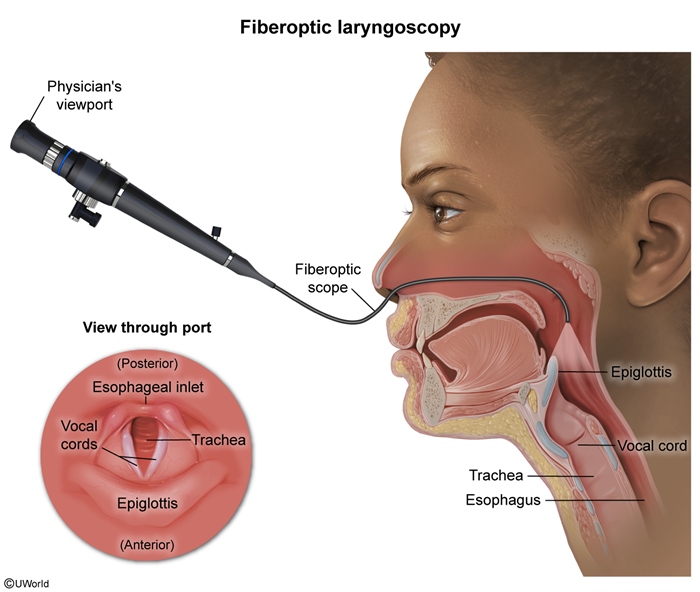Laryngomalacia
Article Sections
Introduction
Laryngomalacia is the most common congenital cause of stridor in infants. The classic inspiratory stridor results from the dynamic collapse of the supraglottic structures during inspiration due to the structural and functional immaturity of the larynx. Although most cases are mild and self-limited, some infants may develop feeding difficulties, respiratory distress, or failure to thrive.
Pathogenesis
Dynamic changes to the airway caliber occur with inspiration and expiration due to pressure differentials created by airflow. During inspiration, faster airflow causes decreased intraluminal pressure in the airways (eg, decreased intralaryngeal pressure). In patients with a more collapsible extrathoracic airway (eg, laryngomalacia), the decreased pressure inferior to the larynx leads to increased airway narrowing, resulting in turbulent flow and inspiratory stridor (Figure 1). Any increase in breathing effort (eg, due to feeding, crying) increases airflow, worsens supraglottic collapse, and increases stridor.
Continue Learning with UWorld
Get the full Laryngomalacia article plus rich visuals, real-world cases, and in-depth insights from medical experts, all available through the UWorld Medical Library.
Figures


